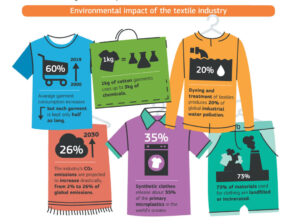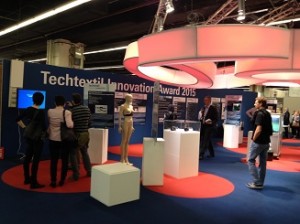To read the full article, please login. The full content of this article and all premium articles is available exclusively for site members.
Site membership is free. If you are an existing user, please login. New users may register below.
Carbon Concrete Researchers win German Future Prize 2016
Researchers behind carbon concrete win German Future Prize 2016 German President Joachim Gauck awarded the German Future Prize 2016 to scientists from Technical University of Dresden who developed carbon concrete. Carbon concrete is an alternative to steel enforced concrete. The prize is worth 250.000 €, an exceptional high honor for textile research in Germany. The German Future Prize is one of the most important and most prestigious scientific awards in Germany. The winners are Manfred Curbach (Institute for Concrete Construction), Peter Offermann and Chokri Cherif (Institute for Textile High Performance Materials) from the Technical University of Dresden, Germany. What has started in the mid- 1990’s with fundamental research at TU Dresden and the RWTH Aachen, is now continued in the C3 project under the leadership of TU Dresden. Chokri Cherif, Prof. Manfred Curbach (from left to right) and Prof. Peter Offermann accept the German Future Prize for innovation from President Joachim Gauck. Steel enforced concrete vs carbon concrete The building industry uses steel to reinforce concrete. Steel enforced concrete guarantees fire safety, durability and security. However, its main weakness is the steel reinforcement in the center of the concrete structure can corrode due to the presence of iron. Many bridges from the 1960s and 70s are gradually losing stability due to weather and the impact of heavy trucks. They will have to be replaced in the coming years. Carbon concrete could replace the use of steel in construction work. Instead of the traditional iron grates, carbon concrete contains carbon fibers. Advantages of carbon concrete Those fibers are more durable than steel and don’t corrode. Therefore, it is possible to built slimmer and longer lasting structures. Compared to steel, carbon is four times lighter and has five times the load-capacity. Also, it is form-free and saves material. Unlike steel, carbon does not rust. There is no additional need for a concrete cover as a protection layer, which up until now has shielded the reinforced concrete components from corrosion. The significantly reduced use of material, due to much better performance, allow for a total savings of material. The innovative construction material allows thin-walled constructions and material savings of more than 50%, even up to 80%. Facade panels or reinforcing layers with carbon concrete, for example, are only about 2 cm thick, as in the case of reinforced concrete about 8 cm. This means that about 75% less material has to be produced, transported, installed and anchored. Current research projects show, that carbon reinforced walls are heatable, due to the electrical and thermal conductivity of carbon. Sensors can be installed right inside the walls. This allows new methods to monitor the building’s state. Furthermore, carbon concrete is very flexible. Using this material, architects can design geometry of buildings, which so far has been extremely difficult to implement. Replacing steel enforced concrete by of carbon concrete Worldwide, the building industry uses around 160 million tones of steel each year to reinforce concrete. The construction industry is regarded as a rather conservative industry, protected by



